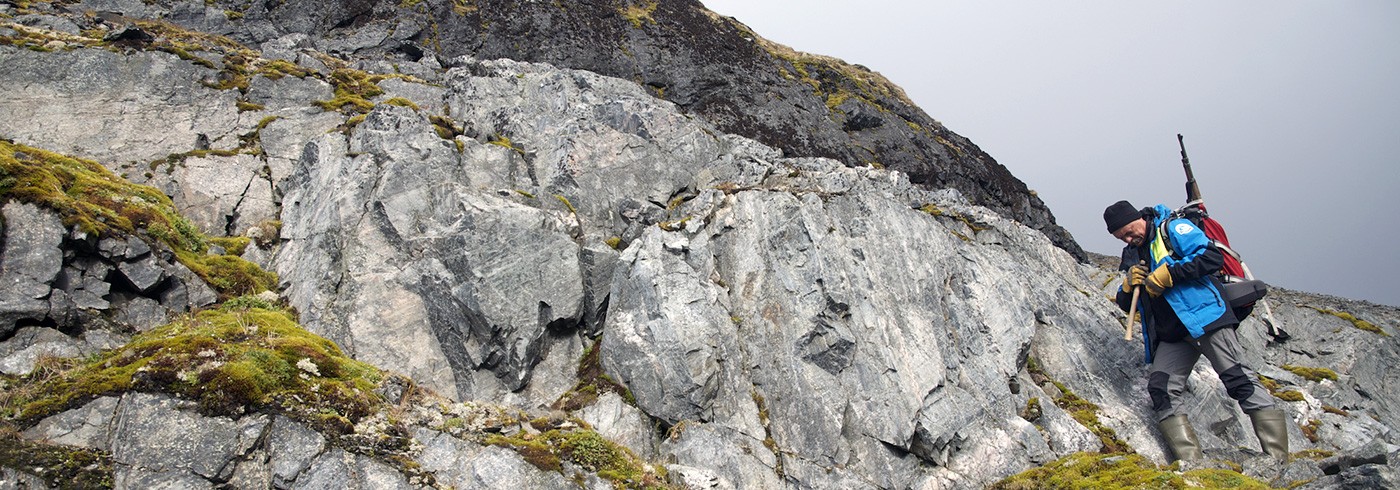Waiting here at Tromsö airport for the continuation of the flight to Longyearbyen is the right time to start the expedition diary. As an introduction a short summary and explanation of the research project NOA, Neoproterozoic Orogeny in the Arctic (Neoproterozoic is1000 to 543 million years ago, Orogeny means mountain building).
For a major part of the history of the planet Earth, the development of continents and former continents over geological time is difficult to reconstruct. Mountain belts are like the pattern of a gigantic puzzle, which help us to put the pieces together. Of course, this puzzle has changed over geological time and becomes more difficult to solve with increasing age.
During Neoproterozoic times (1000-5423 million years ago) the supercontinent Rodinia amalgamated, which influenced large parts of the present Arctic shelves. Thus, it is possible to say that these tectonic processes set the scene for the formation of major mountain chains (orogenies), e.g. the Caledonides of Scandinavia and Greenland, and also the present development of the Arctic and Nordic regions.
The Neoproterozoic basement consists of igneous and metamorphic rocks below a younger sedimentary cover and its historical development in the Arctic is controversial. It is only exposed in few places and almost all of the basement beneath the Arctic and Atlantic shelves is covered by younger sediments. The interpretation of these basement provinces and the traces we find in the younger sedimentary rocks influences the tectonic reconstructions for the Neoproterozoic time and Rodinia in a profound way, and with it also our view on the later tectonic developments.
In the NOA-Svalbard project we investigate the bedrock in western Svalbard, the importance of Neoproterozoic orogenies in these areas and also how these rocks were affected by deformation and metamorphism in the early time.
Now our group arrived to Longyearbyen, that is Jarek (Jaroslaw Majka) from Uppsala University, a metamorphic petrologist with several field seasons on Svalbard, Majek (Maciej Manecki) from AGH Technical University in Krakow, Poland, also a metamorphic geologist a veteran with his first field season on the archipelago 30 years ago, Karolina Kosminska, Majek’s student, Kuba (Jakub Bazhanik) from the Polish Academy of Sciences in Krakow, a isotope geologist, and myself, Henning Lorenz from Uppsala University, a geologist who worked with the tectonic development of the Eurasian Arctic with focus on the Russian Arctic during more than a decade. Jarek and I initiated the NOA project back in 2010.
Today we registered at the Governor of Svalbard’s office and began with checking the reservations of equipment that were made for us, and we had to discover that we would only get floatation suits instead of the expected survival suits. Not to think about driving a Zodiac (rubber boat) in rather open, cold waters without proper protection! We need to find a solution tomorrow.
In the evening we met some colleagues from NPI over a beer. They were remapping parts of Prins Karls Forlandet and in principal turned part of the Neoproterozoic stratigraphy upside down. Exciting, but also complicating our fieldwork. We will see…
Henning Lorenz, Uppsala universitet






